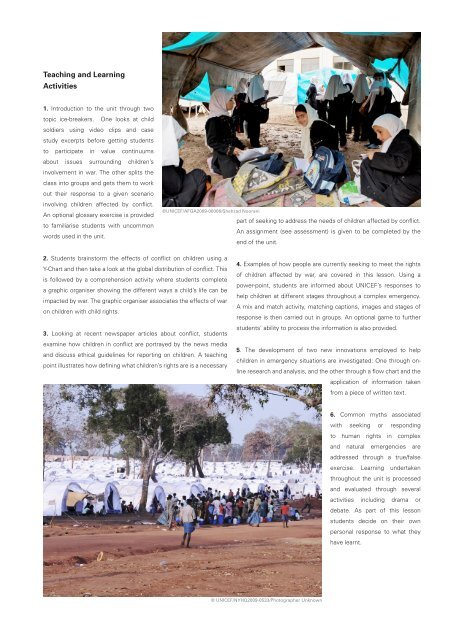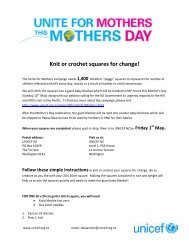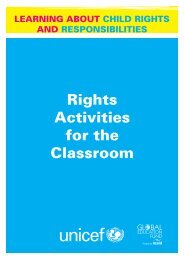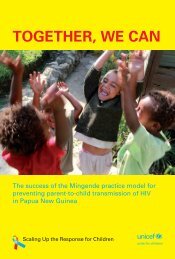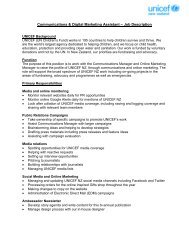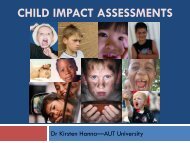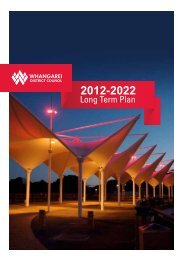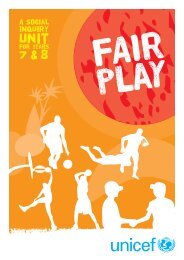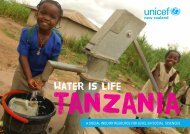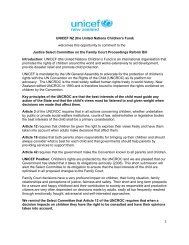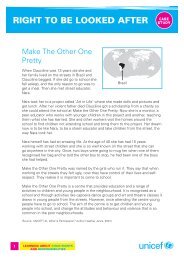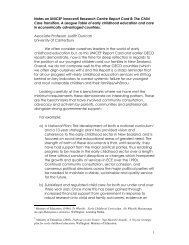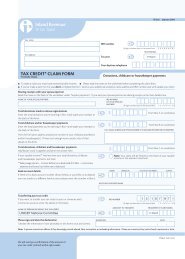Caught in the Crossfire pdf - Unicef
Caught in the Crossfire pdf - Unicef
Caught in the Crossfire pdf - Unicef
You also want an ePaper? Increase the reach of your titles
YUMPU automatically turns print PDFs into web optimized ePapers that Google loves.
Teach<strong>in</strong>g and Learn<strong>in</strong>g<br />
Activities<br />
1. Introduction to <strong>the</strong> unit through two<br />
topic ice-breakers. One looks at child<br />
soldiers us<strong>in</strong>g video clips and case<br />
study excerpts before gett<strong>in</strong>g students<br />
to participate <strong>in</strong> value cont<strong>in</strong>uums<br />
about issues surround<strong>in</strong>g children’s<br />
<strong>in</strong>volvement <strong>in</strong> war. The o<strong>the</strong>r splits <strong>the</strong><br />
class <strong>in</strong>to groups and gets <strong>the</strong>m to work<br />
out <strong>the</strong>ir response to a given scenario<br />
<strong>in</strong>volv<strong>in</strong>g children affected by conflict.<br />
An optional glossary exercise is provided<br />
to familiarise students with uncommon<br />
words used <strong>in</strong> <strong>the</strong> unit.<br />
©UNICEF/AFGA2009-00006/Shehzad Noorani<br />
part of seek<strong>in</strong>g to address <strong>the</strong> needs of children affected by conflict.<br />
An assignment (see assessment) is given to be completed by <strong>the</strong><br />
end of <strong>the</strong> unit.<br />
2. Students bra<strong>in</strong>storm <strong>the</strong> effects of conflict on children us<strong>in</strong>g a<br />
Y-Chart and <strong>the</strong>n take a look at <strong>the</strong> global distribution of conflict. This<br />
is followed by a comprehension activity where students complete<br />
a graphic organiser show<strong>in</strong>g <strong>the</strong> different ways a child’s life can be<br />
impacted by war. The graphic organiser associates <strong>the</strong> effects of war<br />
on children with child rights.<br />
3. Look<strong>in</strong>g at recent newspaper articles about conflict, students<br />
exam<strong>in</strong>e how children <strong>in</strong> conflict are portrayed by <strong>the</strong> news media<br />
and discuss ethical guidel<strong>in</strong>es for report<strong>in</strong>g on children. A teach<strong>in</strong>g<br />
po<strong>in</strong>t illustrates how def<strong>in</strong><strong>in</strong>g what children’s rights are is a necessary<br />
4. Examples of how people are currently seek<strong>in</strong>g to meet <strong>the</strong> rights<br />
of children affected by war, are covered <strong>in</strong> this lesson. Us<strong>in</strong>g a<br />
power-po<strong>in</strong>t, students are <strong>in</strong>formed about UNICEF’s responses to<br />
help children at different stages throughout a complex emergency.<br />
A mix and match activity, match<strong>in</strong>g captions, images and stages of<br />
response is <strong>the</strong>n carried out <strong>in</strong> groups. An optional game to fur<strong>the</strong>r<br />
students’ ability to process <strong>the</strong> <strong>in</strong>formation is also provided.<br />
5. The development of two new <strong>in</strong>novations employed to help<br />
children <strong>in</strong> emergency situations are <strong>in</strong>vestigated: One through onl<strong>in</strong>e<br />
research and analysis, and <strong>the</strong> o<strong>the</strong>r through a flow chart and <strong>the</strong><br />
application of <strong>in</strong>formation taken<br />
from a piece of written text.<br />
6. Common myths associated<br />
with seek<strong>in</strong>g or respond<strong>in</strong>g<br />
to human rights <strong>in</strong> complex<br />
and natural emergencies are<br />
addressed through a true/false<br />
exercise. Learn<strong>in</strong>g undertaken<br />
throughout <strong>the</strong> unit is processed<br />
and evaluated through several<br />
activities <strong>in</strong>clud<strong>in</strong>g drama or<br />
debate. As part of this lesson<br />
students decide on <strong>the</strong>ir own<br />
personal response to what <strong>the</strong>y<br />
have learnt.<br />
© UNICEF/NYHQ2009-0533/Photographer Unknown


